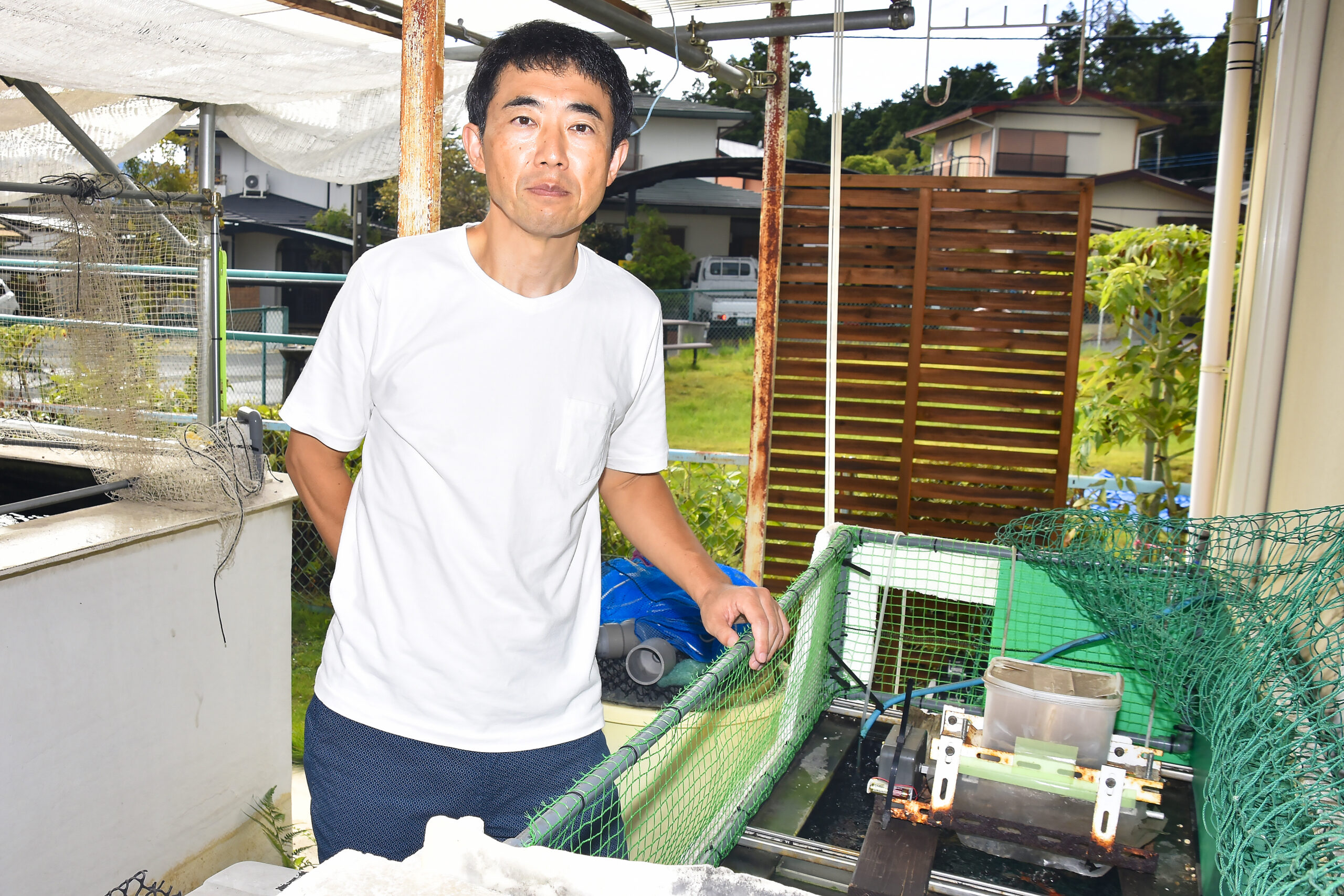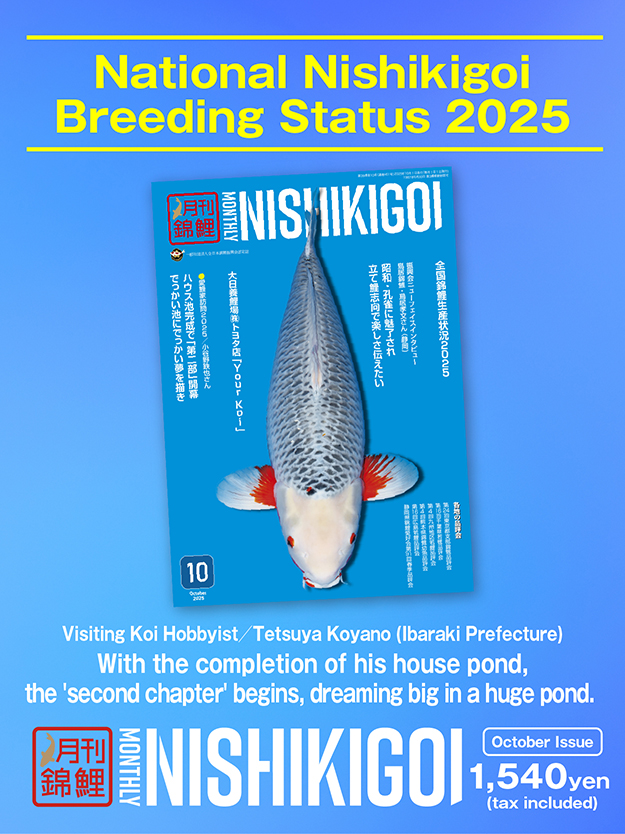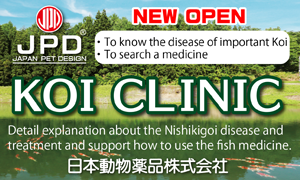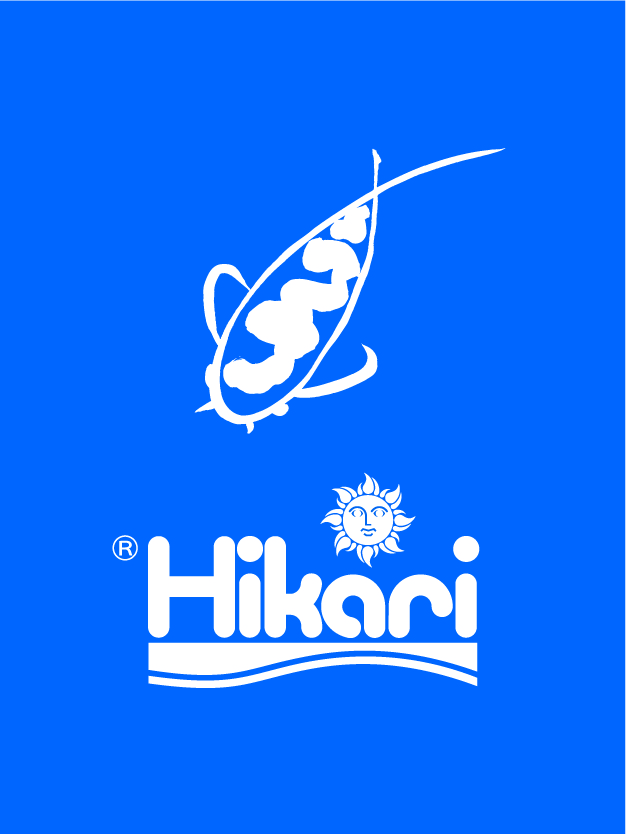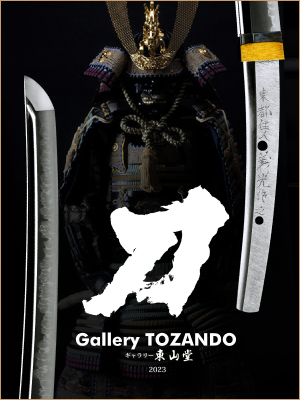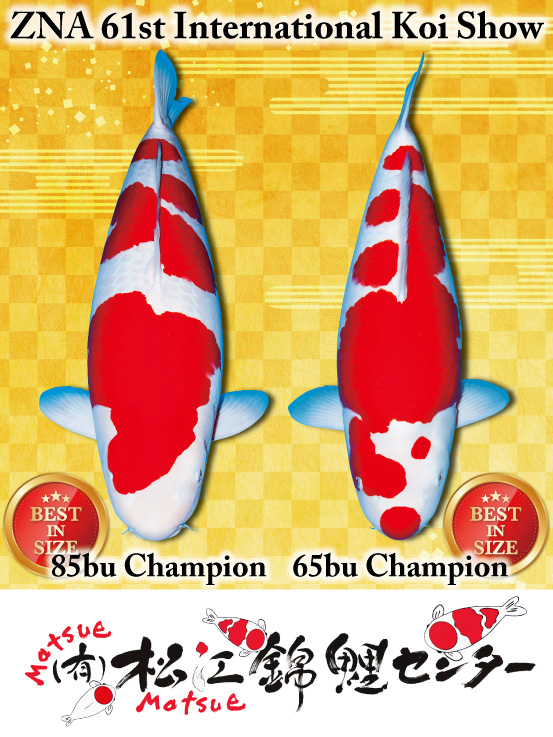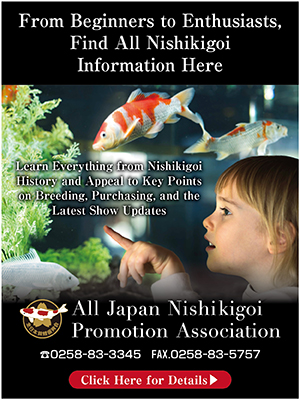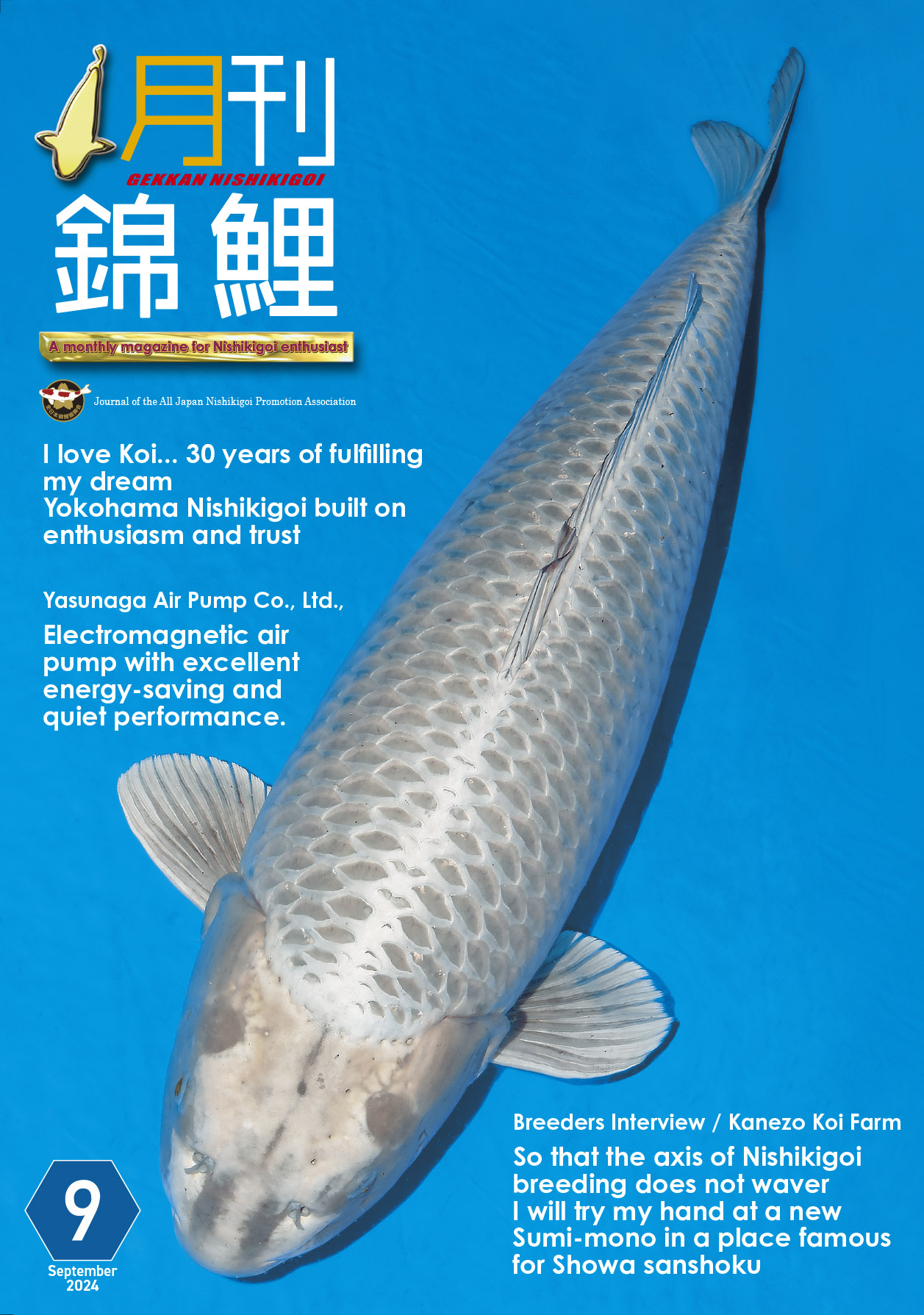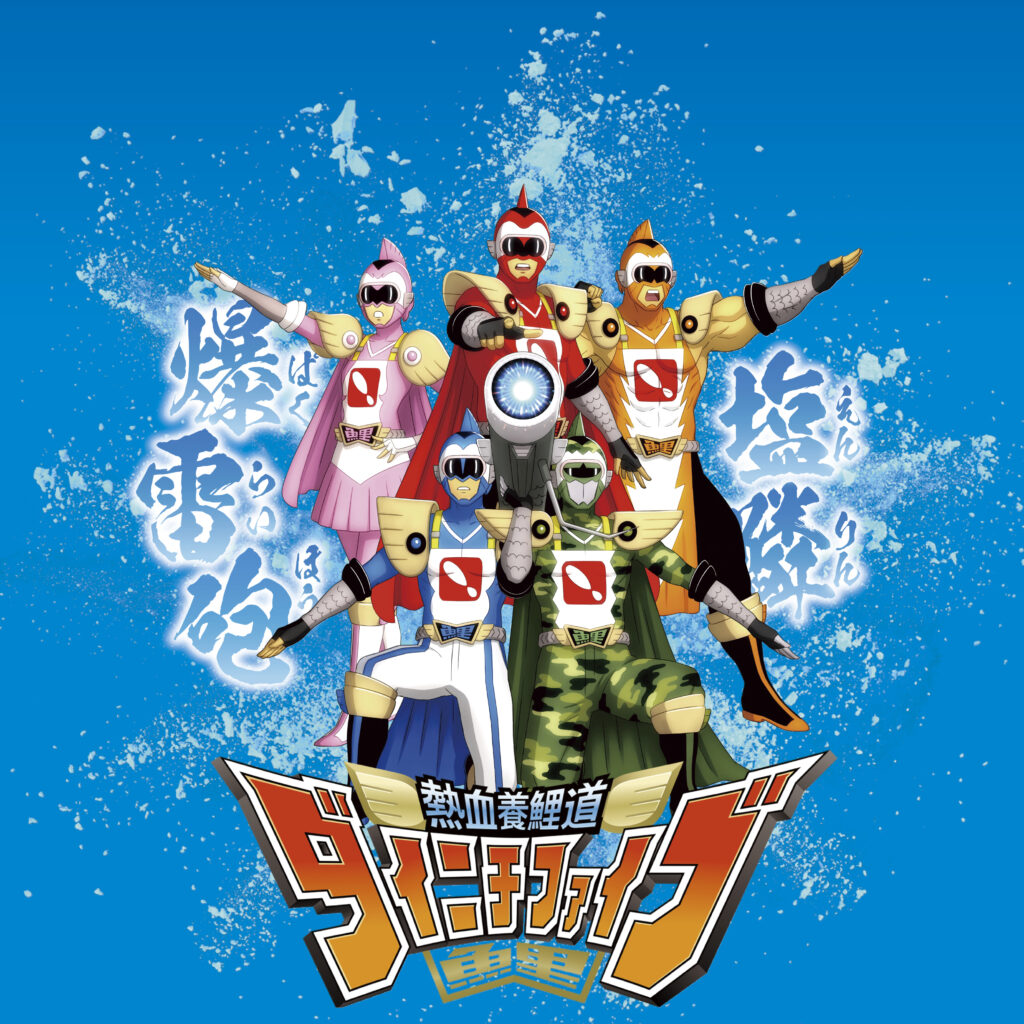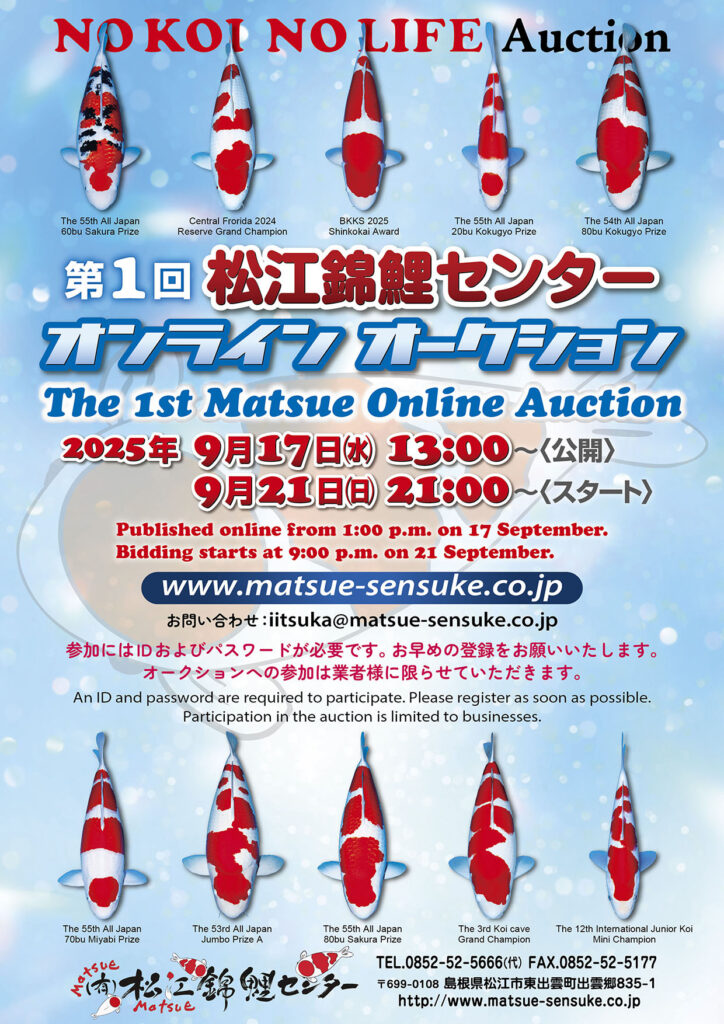Focusing on Hiroshima Koi
Developing a Vision for “Tategoi”
― Where do you usually get your koi from?
Torii : Since I worked at Konishi Koi Farm, I have many good relationships with breeders in Hiroshima, so I primarily get my koi from there. The largest number of koi I currently have are from Mr. Oyama (Oyama Koi Farm). Mr. Oyama is a bit of a niche breeder, but his way of looking at koi is similar to mine. The first time I saw one of his Showa, the white skin was so beautiful that I thought, “I want to deal in these Showa.”
― Looking at your stock, Showa makes up the majority.
Torii : Right now, it’s about 80% Showa. I like Showa and Kujaku, and I once thought about making it a “Kujaku and Showa specialty store.” Other dealers advised me that “customers buy because there are various varieties,” but the desire to try it is still lingering in a corner of my mind (laughs).
― Which breeder do you mainly get Kujaku from?
Torii : I’ve always loved the Kujaku from Yamada Koi Farm in Miyoshi, Hiroshima. In my first year at Konishi Koi Farm, we used one of Mr. Yamada’s Kujaku (photo ①), which won the variety championship at the All Japan Koi Show, as a parent. Its offspring were incredibly beautiful.
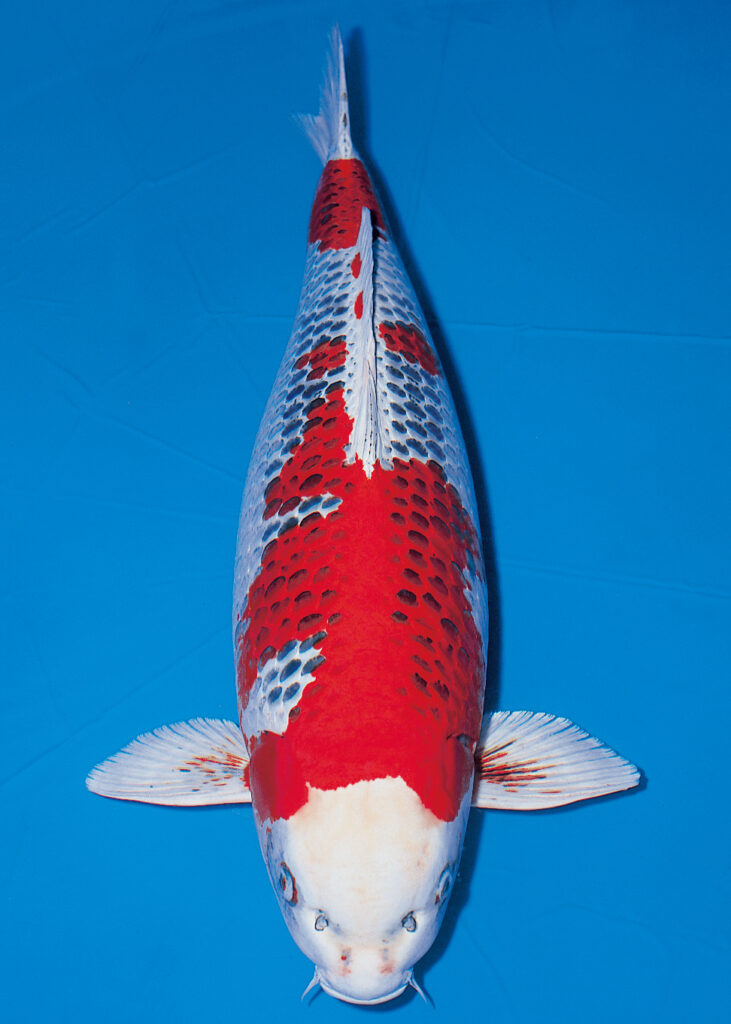
― Yamada Kujaku is a representative bloodline for Kujaku as celebrated koi.
Torii : Yes. So currently, I source Kujaku mainly from Mr. Konishi, who breeds that line, as well as from Mr. Omosako (Omosako Koi Farm) and Mr. Takeda (Takeda Koi Farm)
― Kujaku is a particularly popular variety among Hikari koi, but they are said to be very difficult to produce in terms of sheen, pattern, and body shape.
Torii : Originally, there are few Kujaku bloodlines. Mr. Yamada himself was troubled by the blood becoming too concentrated, and Mr. Takeda also lacks parent fish to cross with… I think many people breeding Kujaku hit that wall. However, over the past 20 years, the koi have definitely gotten larger and undoubtedly more beautiful.
― You could say it’s the variety that has seen the most improvement. By the way, are the koi you sell mainly small sizes?
Torii : I mainly source smaller tosai, so they are generally around 15cm to 25cm. In the current domestic situation, the larger the size, the fewer buyers there are, making them harder to sell. That said, personally, I’d like to sell koi that I’ve grown out to a decent size myself, so I think it would be good to have a few of those sizes in stock as well.
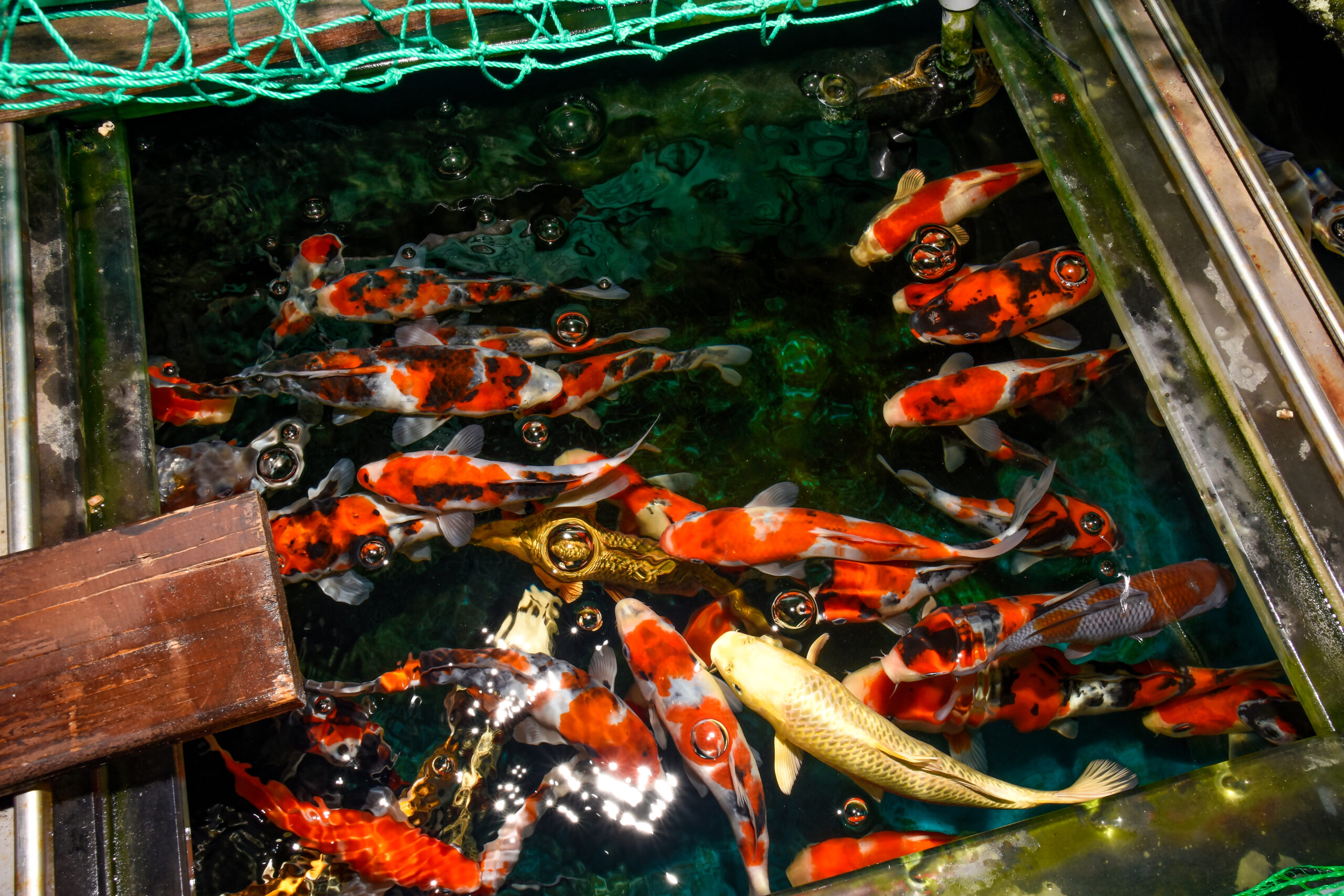
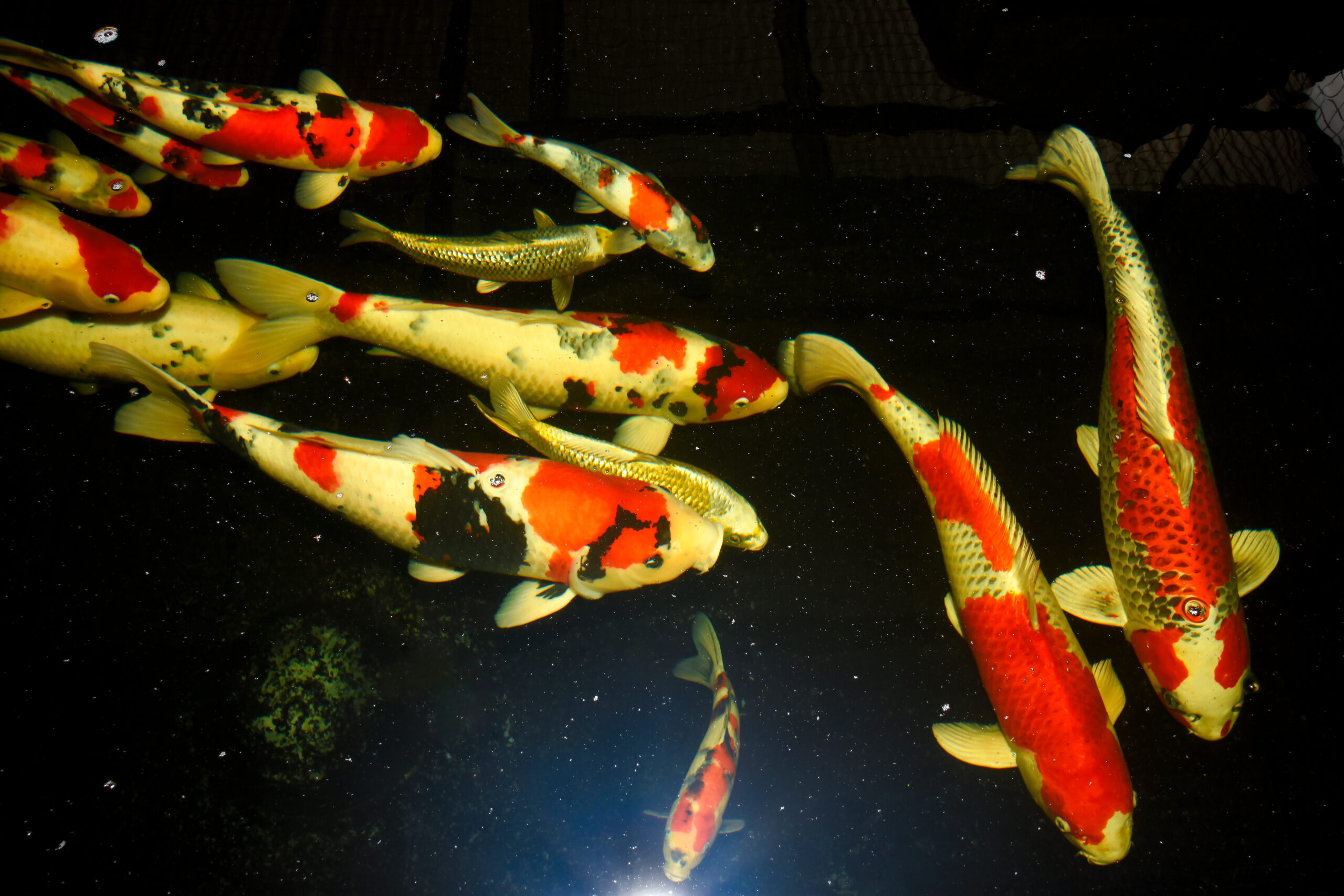
― What’s the typical price range?
Torii : It varies depending on the season, but it’s usually between 3,000 and 30,000 yen. If a koi I’ve bought doesn’t meet my standards along the way, I might sell it for 500 or 1,000 yen. But I can’t run a business on that alone, so I feel I need to move into handling some higher-priced koi as well.
― For higher price ranges, it becomes important to increase the number of hobbyists who appreciate koi selected by your eye, right?
Torii : Yes. I see that as one of my targets. However, that applies not only to expensive koi but also cheap koi; I want to buy what I’ve seen with my own eyes as much as possible. Sometimes I’m asked, “Can you really do business like that?” and realistically, probably not, but I feel I need to somehow show “my style” somewhere.
― What is your “style”?
Torii : I think it’s in “tategoi”. When I was a hobbyist, I wasn’t wealthy, so to hit the jackpot, I had to choose fish that were likely to improve. I would select and buy them myself and then raise them to be better. I’ve always looked at koi that way, and my experience in production made me even better at selecting such koi.
― Tategoi are more dream-inspiring.
Torii : A producer once said, “Even among dealers, the number of people who can’t see Tategoi has increased.” They only judge based on the current state, unable to see if this koi will improve in the future or break down. I feel that too when selling koi. Probably due to the influence of the internet, koi with good patterns sell regardless of quality.
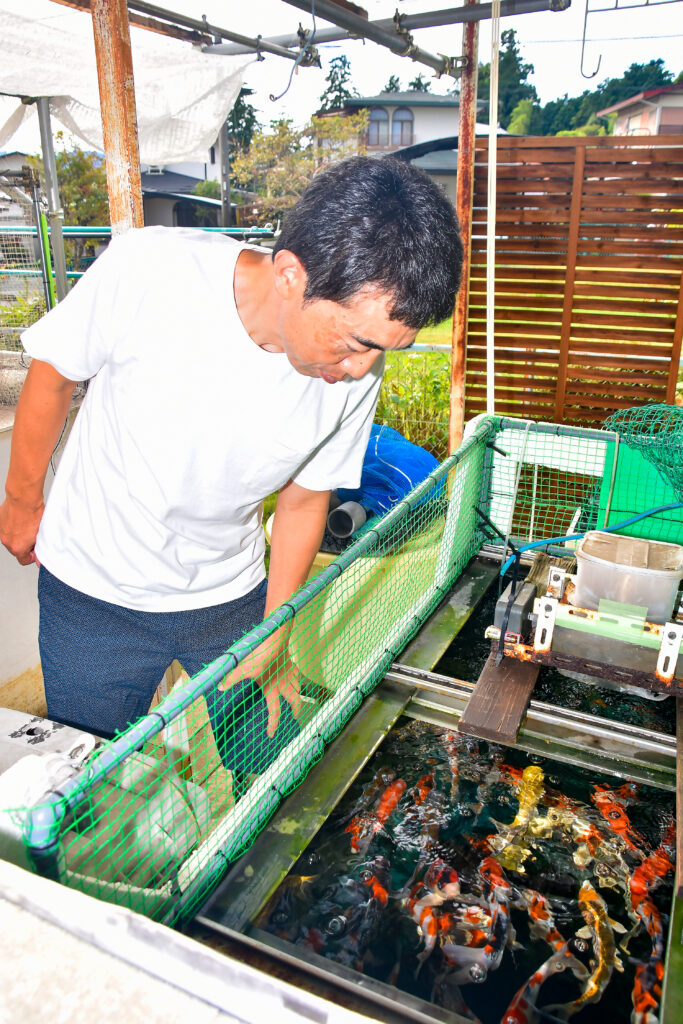
When I was a hobbyist, I bought koi from various producers, but from a certain point, the fish lined up for sale were all finished koi.
― Did hobbyists start preferring such koi?
Torii : Rather, I think the way dealers sell has shifted towards that. In previous sales, it was fun like a treasure hunt, looking for koi with potential in the cheaper price pools, koi that could surpass the higher class. I once overheard a customer mutter, “It becomes less beautiful when I take it home and keep it,” and I thought that wouldn’t be fun. The joy of keeping them is seeing them improve after bringing them to your own pond.
― Koi that you can watch change and keep for a long time.
Torii : If you are passionate about koi shows, a “finished” koi is a ready-to-use asset, and that’s a good way to enjoy the hobby, of course. But it costs a lot of money, and not everyone can do that. I believe that if we want many people to enjoy the hobby for a long time, we dealers must teach them how to look for tategoi.
― I see.
Torii : But if I only buy koi that I personally think are good, they might not sell, so when I’m buying, I tell myself, “Buy the koi that will sell quickly, that will sell quickly” (laughs)
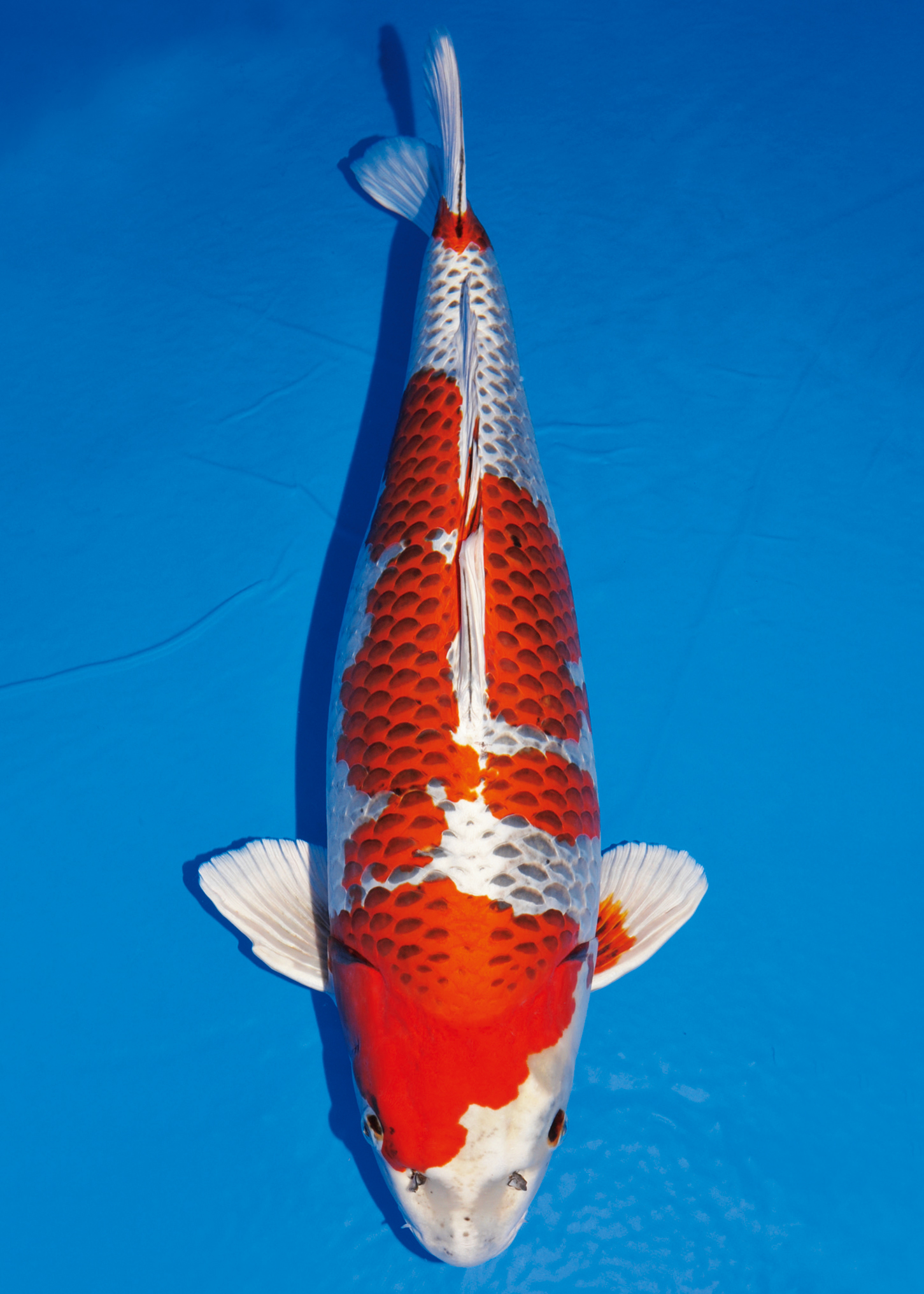
Best in Varieties 80bu
Breeder / Namiki Fish Farm (Yamada Kujaku’s Bloodline)
After winning a prize at a koi show, it was used as a parent koi by several breeders in Niigata.
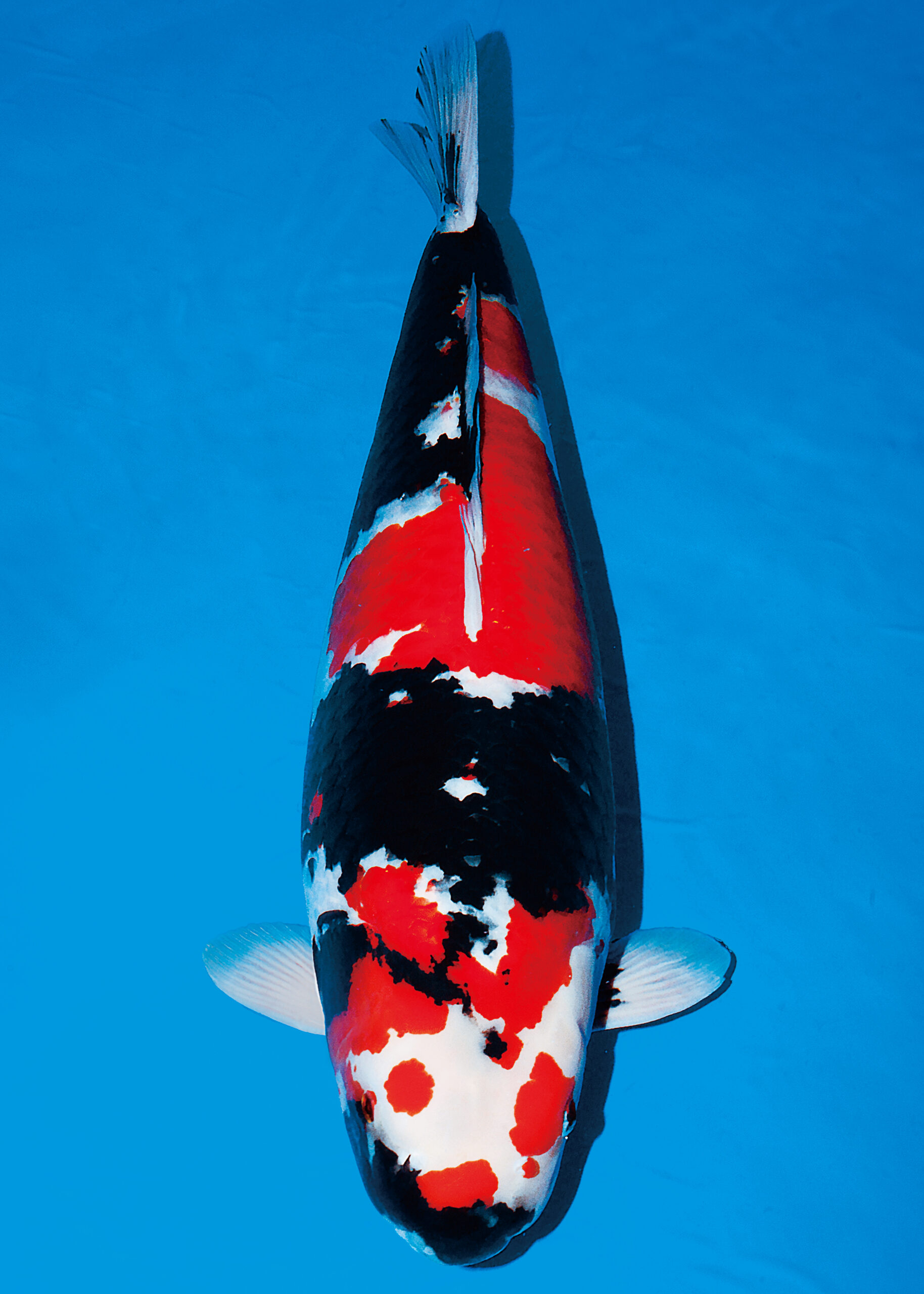
Grand Champion Over 60bu
Breeder / Ueno Fish Farm
― So, for business, you can’t just go with your own preferences.
Torii : Exactly. So, when a customer comes, in addition to the koi they choose, I might give them one or two others and say, “I think this one will develop in this way.” I hope that way, customers will think, “Oh, so that’s another way to look at koi.”
The domestic market is shrinking now, but I believe new sprouts are emerging. There are more young people involved than dealers might think. From the reactions of Ryoga-ri-an in Aichi, I hear that “many young people are coming,” and I hear similar stories from other dealers. On Instagram, many young people or beginners contact me and buy koi.
― Are they mostly from within the prefecture?
Torii : Both within and outside the prefecture, but my impression is that there are more from within. If they’re close, they come directly.
― If there’s a koi dealer nearby, people will want to visit in person.
Torii : While there is this interest in raising koi, I feel that the number of young people participating in koi shows is not increasing. Everyone starts with koi that cost a few hundred or a few thousand yen. I think the entire industry needs to think about how to better nurture these people so they can eventually buy fish that cost tens of thousands of yen.

